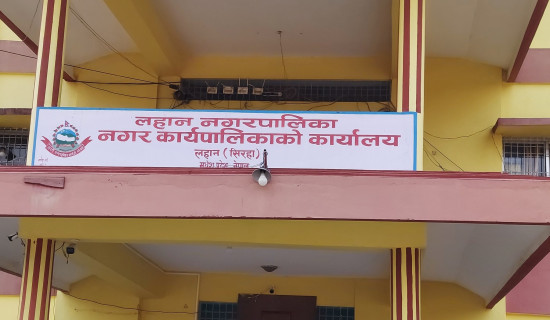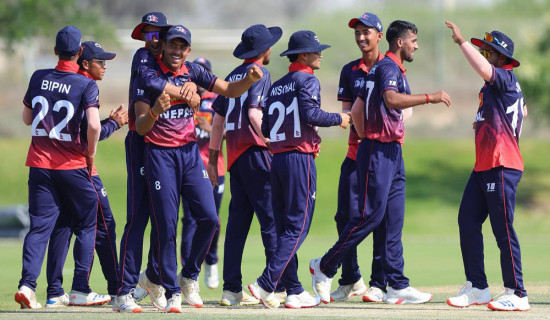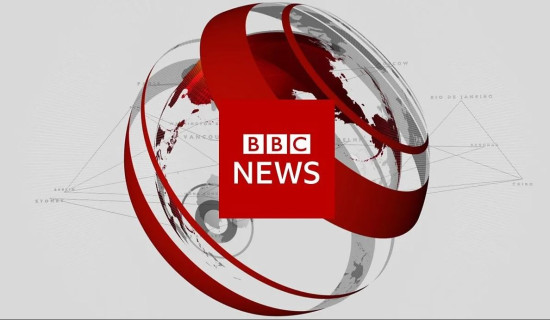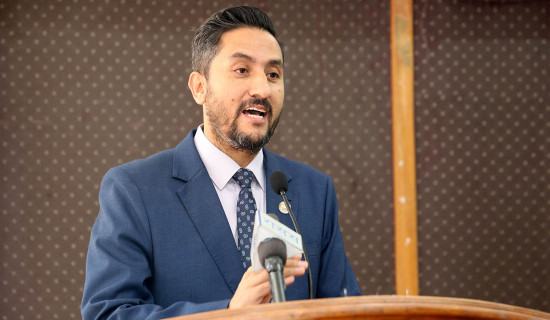- Wednesday, 17 December 2025
Challenges In Imparting Creative Education
The Constitution of Nepal, 2015 mandates the provision of free and compulsory education to all citizens. In line with the constitutional provision, efforts have been made to improve the education sector. A new curriculum has been designed to prioritise flexible and practical approaches to learning at the school level which tries to reflect students’ intellectual and creative abilities beyond the traditional exam methods.
The National Curricula Framework 2076 aims to promote experience-based learning through the development of knowledge, skills and abilities among the students by engaging them in creative areas like music, acting, painting, sculpture, and handicrafts. The framework has a clear provision of the creative work curricula for grades 1-12. However, it is quite challenging to apply this in practice due to various factors, including teachers’ availability, resource limitations, geographical barriers, and a lack of awareness and understanding of the concept of creative education and its evaluation spirit. This form of education aims to promote education based on practical learning that enhances students' abilities and moves away from rote learning and traditional teaching methods.
Skilled Human Resources
The 15th National Plan of Nepal also envisages developing "creative, skilled, competitive, productive, and innovative human resources". In this regard, creative education is aligned with the macro-national plan. However, if the provisions mentioned in this document are not implemented effectively, the plan and policies will be limited to public criticism only.
To ensure the implementation of policy provisions related to creative education, teachers and experts have advised the government and its relevant bodies not to delay in taking appropriate action in this connection. According to a secondary-level teacher, the absence of adequate resources has resulted in evaluating creative education based solely on estimated values derived from students' homework and their attendance. The teacher adds, "No one has given us any training or resources to assess the 20-mark creative activities at the school level. We have no other option but to rely on what we know and can do."
However, he expresses dissatisfaction with their traditional assessment practice. The teacher claims that his statement reflects the status of teachers working with approximately 28,000 community schools across the country. A mini-study report on the "State of Creative Education through Art" reveals that creative education is not being taught under the basic-level curriculum. The report highlights that schools have textbooks, but what is lacking is the implementation of the curriculum. In addition to the curriculum, the teachers’ manuals should also be mandatory in schools. Nevertheless, schools seem to be delivering creative education through art without considering the level of competency and key achievements outlined in
the curriculum.
The capacity and adequacy of teachers are prerequisites for quality education. However, Nawaraj Ghimire, a teacher at Shiva Secondary School in Latikoili of Surkhet district, raises concerns about achieving expected outcomes of the national curricula framework when teachers lack information and understanding about general educational activities, particularly in emerging areas. "In Nepal, almost 90 per cent of teachers cannot even calculate their students' GPA (grade point average). Consequently, creative learning and evaluation are reduced to mere rituals. This is a harsh reality throughout the country," Ghimire says. He asserts that teachers' inadequate knowledge and understanding of creative education and evaluation pose significant challenges to progress.
Despite being part of the curriculum, creative education’s evaluation has been ineffective owing to a lack of human resources, technical and economic support, and necessary infrastructure. Even though the term "creative work" is used, teachers are still found evaluating students' creative abilities by reviewing their homework, and attendance records. This type of evaluation fails to do justice to students and does not satisfy teachers as well. Therefore, experts underline the urgency of the state’s action to improve the effectiveness of evaluation of the creative work curricula by addressing the gaps and challenges faced by schools
and teachers.
Veteran educationist Dr Bidyanath Koirala observes: "The era has become upgraded, leading to the start of digital daily life. But teachers still rely on physical letters, while children are two steps ahead of them. Therefore, introducing new policies and programmes in the education system without improving the capacity of teachers would be pointless.”
However, the concept of creative education at the school level is a good initiative. But there is a lack of comprehensive studies regarding the situation of evaluating creative education at the school-level. However, some small studies have indicated that extracurricular activities such as singing, dancing, and playing musical instruments are considered creative activities in schools. Due to this limited understanding, the students are likely to be deprived of learning handicrafts, painting and other indigenous creative skills envisioned by the curricula framework.
In this context, Prachanda Shakya, Chairman of The Federation of Handicraft Associations of Nepal, says that including handicrafts in the creative curriculum of schools would be highly beneficial for both students and the handicraft sector. But he doubts that weather school can ensure the learning real sense or not. If creative work is limited only to exams and evaluations, neither the students will learn nor will the nation get the required human resources.
Essential knowledge
The stakeholders suggest that the school curriculum for creative work should not solely rely on students' grade promotion but also consider its market relevance. Given the issue of increasing educated unemployment, creative work can serve as a means to reduce it. However, the lack of adequate learning resources and tools jeopardises the quality of education and may deprive students of essential knowledge.
For instance, the Curriculum Development Centre (CDC) has noted that 90 per cent of schools do not have any musical instrument to teach art-related education under creative work. Similar problems exist in other creative genres as well. A dearth of subject-specific teachers poses another challenge. Against this backdrop, what can students learn? This is a pressing concern and a question that demands prioritized reforms. If a creative education plan is implemented in all schools across the country, it could be instrumental in preserving the nation’s artistic skills and culture, and also expanding employment opportunities.
(Ghimire is a media educator/researcher.prakashdocument@gmail.com)

















